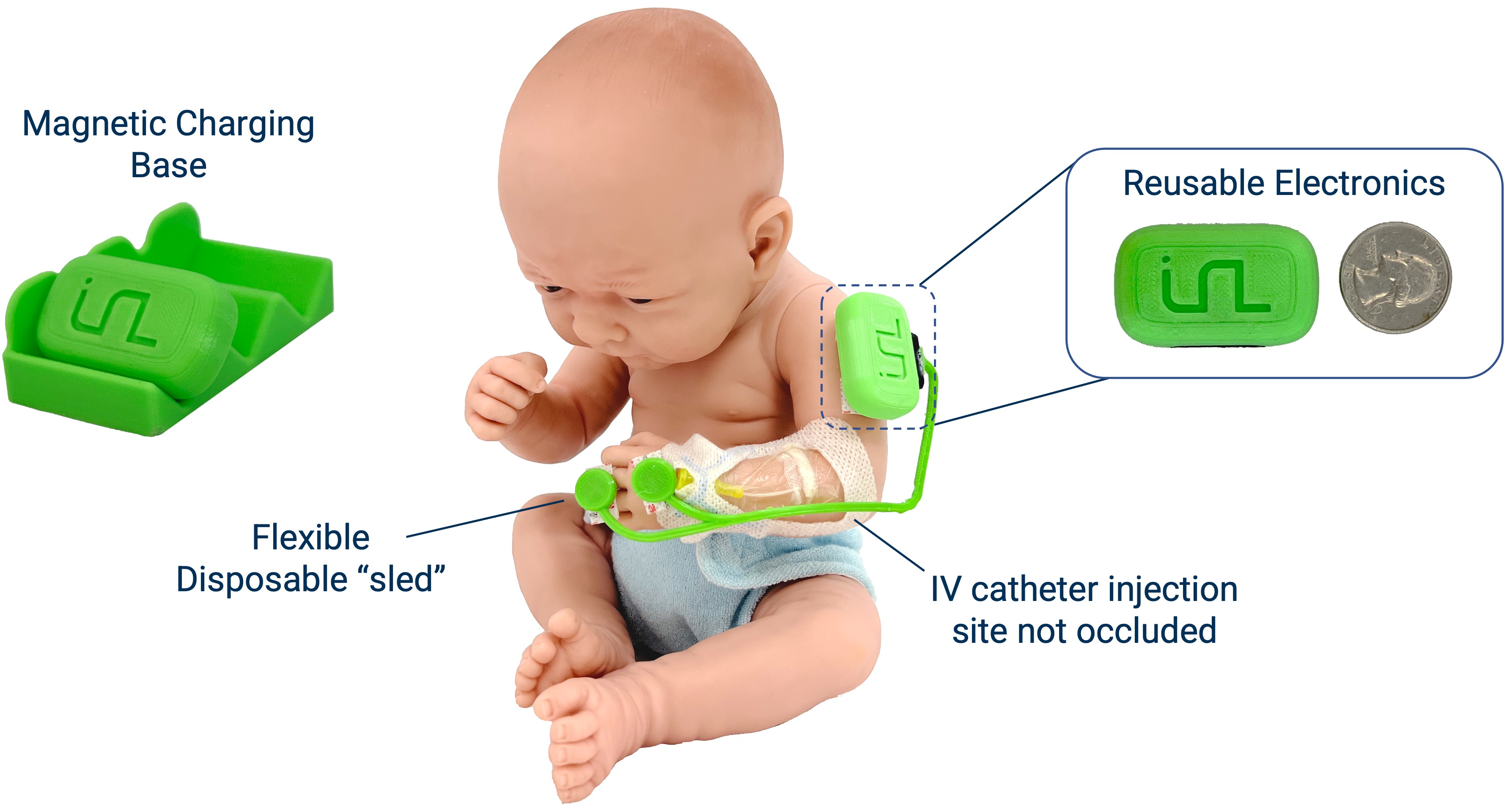Peripheral IV infiltration and extravasation (PIVIE), which occurs when fluid enters surrounding tissue rather than the vein, can lead to serious medical emergencies whose resolution depends on timely detection. Current detection primarily involves caregivers observing the site every 1 to 2 hours following a protocol or standard of care. There is a need for an early PIVIE detection system when patients cannot notify medical staff about their symptoms, for example, when under anesthesia or undergoing surgery. Early detection is of great importance for neonates and small children, where complications caused by PIVIE are the most severe and rapid responses are essential.
Untethered Scanning of IV Site Provides Automatic and Early Detection
Designed with neonates and small children in mind, DetectIV provides a continuous, noninvasive, and wireless PIVIE detection system. Two electrodes connect directly to the device, and two satellite electrodes connect via flexible cable/sled. Different configurations of the device sled allow for a wide variety of placement sites. In contrast with existing limited technologies, the sensor does not cover the IV site and works well with all skin types. It tracks changes in the site’s bioimpedance using a small, safe alternating electrical current to detect voltage drop and scan the tissue for fluid. As a result of continuously monitoring the site, DetectIV can report infiltration events hours ahead of caregivers.
- Improved surveillance: Continuous monitoring and a wireless alarm system provide automatic and early PIVIE detection.
- Convenient: In contrast with existing limited technologies, the sensor does not cover the IV site, allowing caregivers to continue to perform physical tests as needed. DetectIV is also wireless and does not tether the patient to a bedside pole.
- Fast notification: Infiltrations and extravasations are detected on average 2 hours ahead of nursing standard of care.
- Easy to use: Attaching the device to a patient is quick and easy. First, the sled is placed with two satellite electrodes. Then, the device is placed with the two main electrodes and the sled is magnetically connected. The device magnetically attaches to its sled and charging base.
- Improved patient outcomes: Early detection is of great importance to patients at medium to high risk of infiltration/extravasation and can lead to improved patient outcomes and significant cost savings.
DetectIV is versatile and can be used in hospitals, emergency rooms, surgery centers, and doctors’ offices. Specifically, it is of use to the following populations:
- Pediatric and neonatal patients, for whom complications caused by PIVIE are the most severe
- Chemotherapy patients, including use with ambulatory pumps for treatment
- Geriatric patients, including use in nursing homes and home-based therapy
- General adult population, such as in surgery or when patients are unconscious

DetectIV on an infant model.
